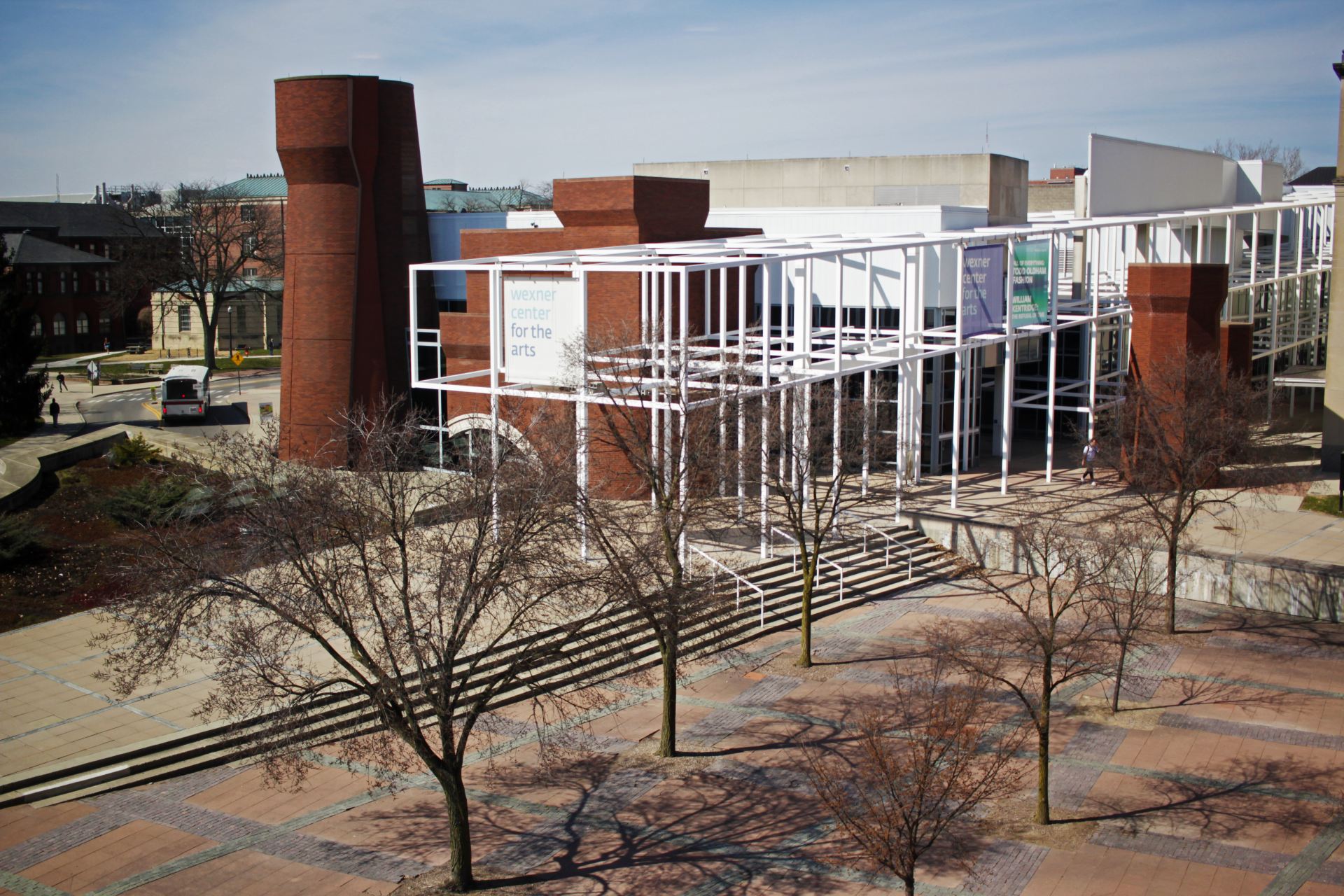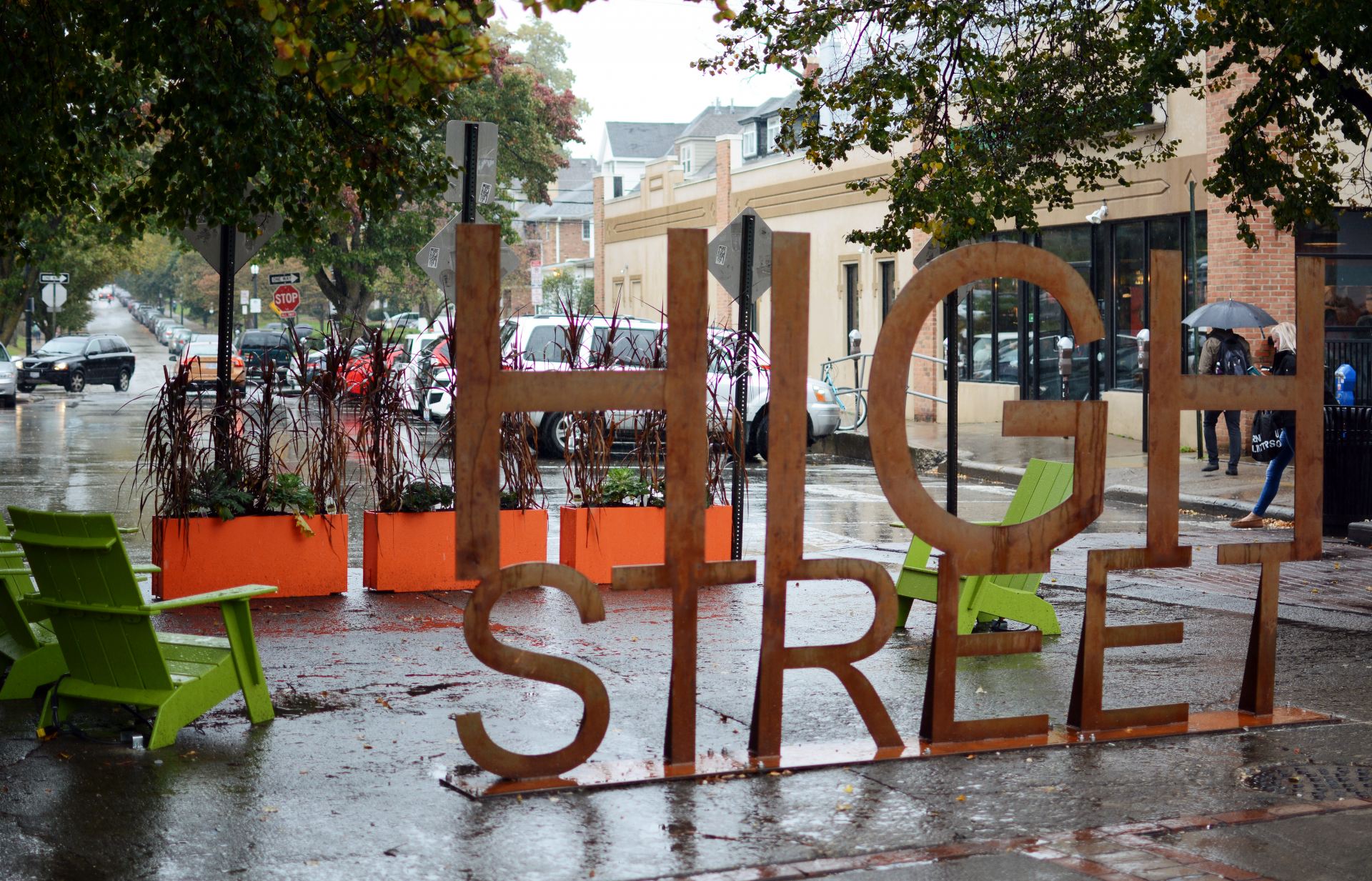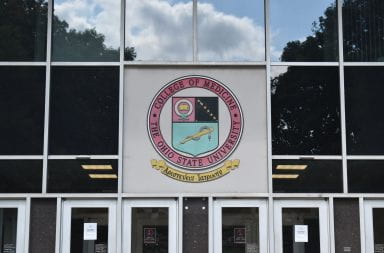
Th Wexner Center for the Arts is at the heart of the University District. The University District Arts and Character Plan is an outline of community-driven ideas for the future of public art near Ohio State’s campus. Credit: Ris Twigg | Assistant Photo Editor
To many, a dumpster only serves one purpose. But in the University District Organization’s new plan, it is a blank canvas for expression.
The University District Arts and Character Plan is an outline of community-driven ideas for the future of public art near Ohio State’s campus. It also serves as a framework to highlight several concepts for local artists.
“The plan is helpful, and it kind of focuses everybody’s thoughts around a framework of ideas. Whether these ideas kind of morph into something else, it at least gives us a starting point,” said Matthew Hansen, UDO’s executive director.
UDO is a nonprofit group that works to improve community engagement, and make the area a “more exciting and interesting” place to live, according to its website.
After two years of planning, the organization is in the process of installing two different projects — dumpster murals and a Music Trail.
The idea to use dumpsters as art canvases came after the organization noticed a large amount of graffiti across the disposal sites.
“[Other cities] have seen that once [art] gets installed on the surface of the dumpster then tagging kind of goes away because it’s not as an attractive object to display their name anymore,” Hansen said.
About two-thirds of music venues in Columbus are located in the University District, which led to the evolution of the Music Trial project.
Similar to programs like the Columbus Beer Trail and Coffee Trail, the Music Trail would feature a passport that would be stamped at different venues. Participants would earn a reward, such as a T-shirt, after completing the trail.
Hansen said the group is working on a pilot that could launch this spring.
These two projects are part of a larger plan that began in April 2016 when several community members went to UDO for conversation about better representing the arts culture in the community after noticing its strong presence in the University District.

A raw steel “High Street” sign was installed in October by the University District Organization. The temporary display will be up for a couple years until construction on the intersection begins. Credit: Kevin Stankiewicz | Editor in Chief
“We’ve got the Wexner Center; we’ve got artists that live in the neighborhood; but there was no study or understanding on how that impact has bettered the University District as a whole. Has it influenced our culture in the area?” Hansen said. “It was seen as a lost opportunity since we had so many artists live in the neighborhood and arts organizations that have formed.”
Hansen said UDO sought help from the community — including representatives from neighborhood groups, businesses, Undergraduate Student Government and the Wexner Center for the Arts — by holding six months of workshops to figure out what the public wanted to see in the district.
A lot of the public’s feedback relayed the same message: Residents don’t want flashy, expensive art pieces, and they like the idea of temporary art.
One example of temporary art is the installation at East 14th Avenue and High Street that includes a mural, plants, adirondack chairs and a steel “High Street” sign. It will be up for only the next couple of years until construction on the intersection begins.
“We saw an opportunity to improve that plaza area there and make it a little bit more friendly so that people would stop and hang out in the area for a little bit, maybe get some coffee and sit in the sun when it’s a nice day,” Hansen said.
Though the entirety of the charter plan is at this time mostly conceptual, Hansen said highlighting local history is a specific area of focus. For example, he said a “prescriptive” idea is to show the history of The Great Diavolo — a circus performer who lived in the Old North during the 20th century and rose to fame as a daredevil.

Local artist Stephanie Rond collaborated with Dionne Custer Edwards to transform the SBX wall into a piece of art, complete with flying books and a poem from Custer Edwards. Credit: Kevin Stankiewicz | Editor in Chief
Hansen said a mural would be created to commemorate Diavolo’s circus poster, complete with bike sculptures to give the illusion of passers-by riding alongside him.
Other ideas outlined in the plan include an interactive art piece, sculptures and murals in parks, a permanent High Street sign, wayfinding signs, soapboxes for public speaking and an adult playground.
Another recommendation is to incorporate student and local artists in order to provide opportunities for them to showcase their art.
“We’ve got tons of talented students that will benefit from these public art projects. We’re going to pay all of our artists so it’s not just a free gig, and that’s really important to us because we know that art is a business to a lot of people and we want to support that,” Hansen said.
With these changes, the University District could become “the street art district of Columbus,” Hansen said, adding this plan will transform the area into a cooler, collective place to live.


